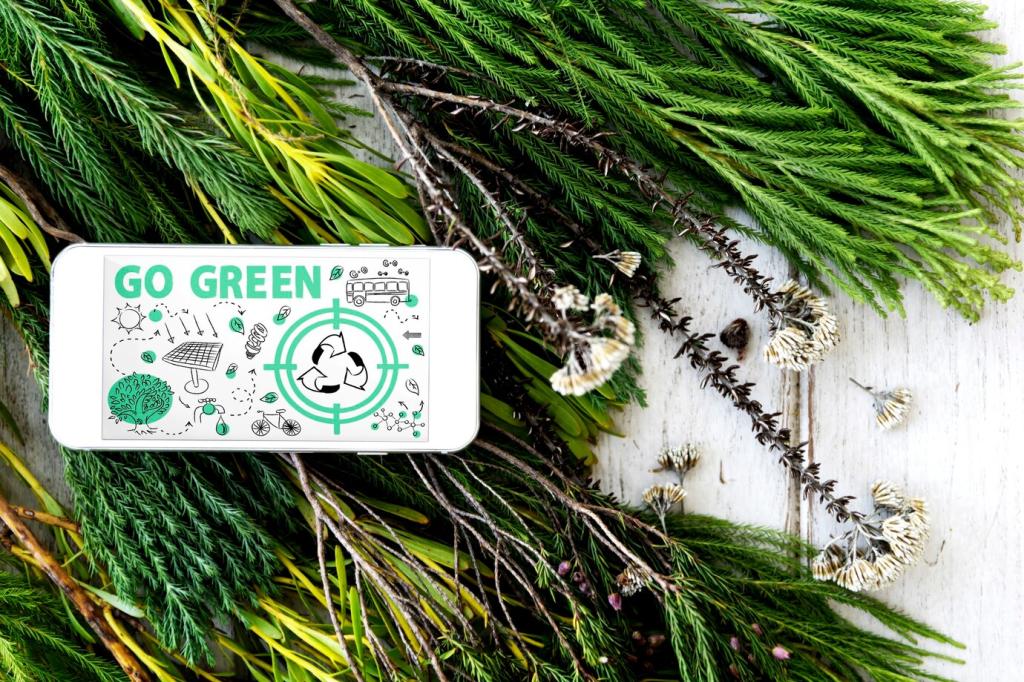
Eco Furniture SEO: Organic Copywriting Techniques
Today’s theme: Eco Furniture SEO: Organic Copywriting Techniques. Learn how to shape honest, search-friendly stories that help conscious shoppers find, trust, and choose sustainable furniture. If this aligns with your mission, subscribe for more eco-minded strategies, and tell us what challenges you face when writing about materials, finishes, and ethics.
Know Your Eco-Buyer’s Intent
Navigational, Informational, Transactional—without the jargon
Map content to intent by listening to the query’s heartbeat. “What is VOC-free finish?” signals education, so teach gently. “FSC walnut dining table near me” wants proximity and stock, so offer addresses and availability. “Repair cracked cane chair” asks for care, so share steps, tools, and safe materials.
Personas with real footprints, not cardboard cutouts
Write for people you could actually meet at a weekend market. Maya rents a small apartment and prioritizes modular pieces; Ben is a new parent focused on non-toxic finishes. Picture their rooms, budgets, and concerns, then answer the questions they would whisper at your booth.
Questions to collect before you type a headline
What is the buyer’s worry, hope, and deadline? What evidence would calm them without fluff? What action can they take in one calm breath? Share your top questions in the comments, and we’ll craft headline examples in a future post tailored to the eco-furniture niche.
Keyword Gardens: Grow Semantic Clusters Organically
Seed, companion plants, and pruning your patch
Start with a seed term like “sustainable oak dining table,” then companion topics: “FSC certification,” “VOC-free oil,” “solid wood joinery,” “repairability.” Prune duplicative pages that compete with each other. Your garden thrives when every plant supports neighbors and light reaches the details buyers care about.
Long-tail love letters that feel personal and precise
Long-tail phrases mirror real questions: “how to clean linseed-oil finish safely,” “best reclaimed teak bench for small balcony,” “ash coffee table with rounded edges for toddlers.” They invite empathetic answers, showcase expertise, and reduce competition. Ask readers to share their favorite long-tail wins and we’ll spotlight them.
Topical maps, not keyword stuffing
Create a map: cornerstone guide on “Eco-Friendly Coffee Tables,” supporting articles on finishes, sourcing, maintenance, delivery impact, and end-of-life options. Interlink like a well-marked trail. Stuffing repeats the same word; mapping expands understanding, improves experience, and signals depth to search engines and humans alike.
Storytelling With Grain: Tone, Texture, and Trust
Instead of “premium quality,” describe the fingertip test: the whisper of a hand plane on ash, the satin feel after the second coat of hardwax oil, the faint citrus scent as it cures. A true, sensory detail builds trust faster than any slogan or sales adjective ever could.
Storytelling With Grain: Tone, Texture, and Trust
Name the mill, cite the certification number, and link to the material safety data. If a screw is zinc-plated rather than stainless, explain why and how to maintain it. Transparency disarms skepticism and invites conversation. Share a supply-chain snapshot and invite readers to ask about anything unclear.




On-Page Ecology: Titles, Headings, and Alt Text That Breathe
Write titles that guide, not shout: “Solid Oak Dining Table—FSC-Certified, VOC-Free Finish, Handcrafted Locally.” Front-load the core term, then add distinguishing proof. Keep it human, avoid truncation, and mirror the promise in your H1 so expectation matches delivery across the first scroll.
On-Page Ecology: Titles, Headings, and Alt Text That Breathe
Alt text should describe function and essentials: “Close-up of FSC-certified oak tabletop with chamfered edge, finished in VOC-free hardwax oil; subtle ray fleck visible.” Avoid keyword cramming. Accessibility is ethical and practical—clear descriptions improve image search visibility and help every visitor feel considered.
Local Roots: Map Pack and Community Signals
01
Keep your Name, Address, and Phone identical everywhere—website, Google Business Profile, eco directories, and social bios. Add categories that reflect sustainability. Mention parking, wheelchair access, and reclaimed wood displays. Readers nearby: tell us your city in the comments to receive localized content ideas in our newsletter.
02
Write posts around moments: “Saturday oiling workshop,” “open studio day,” “drop-off for old stools to be repaired.” Embed dates, photos, and summaries afterwards. These stories generate fresh, authentic local signals and delightful reasons to visit. Invite subscribers to vote on your next workshop theme.
03
Guide reviewers with specific prompts: why they chose VOC-free, how the table fits the room, what surprised them about delivery. Quote snippets responsibly across product pages. Respond with gratitude and detail. Ask readers here to share one review line they’d love customers to mention about sustainability.
Content Compost: Repurpose and Enrich
Sketches, material offcuts, and test panels can become photo essays on joinery, finish trials, and repair tips. Annotate with simple language and safety notes. This repurposed content helps searchers and honors the craft. Share a behind-the-scenes moment with us, and we may feature it next week.


Content Compost: Repurpose and Enrich
Create a page translating FSC, PEFC, and indoor air quality labels into real-life benefits: forests protected, emissions reduced, safer homes. Link each claim to an official source. Invite readers to request a certification you should explain next, keeping your library useful and genuinely educational.
Measure What Matters: Analytics With a Conscience
Track organic entrances to care guides, time on educational pages, and conversions on repair-friendly products. Watch search queries that ask about materials and safety. Celebrate smaller, meaningful wins like newsletter signups. Tell us which metric best reflects your values, and we’ll share tailored dashboard tips.
Test specifics, not hype: certification placement, clarity of finish descriptions, or a before–after photo on a repair page. Keep accessibility unchanged. Document learnings in a living playbook so your team repeats what works. Share your next test idea in the comments and we’ll help refine it.
Pair analytics with human signals: customer emails, showroom conversations, and reader replies. When you hear confusion, adjust the sentence, not just the funnel. Invite subscribers to a quarterly copy clinic where we review one page live, edit together, and publish the improved version with notes.

